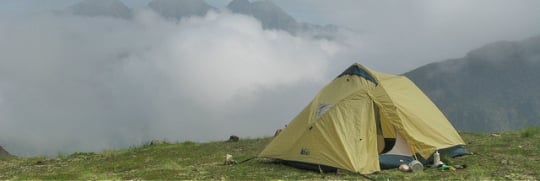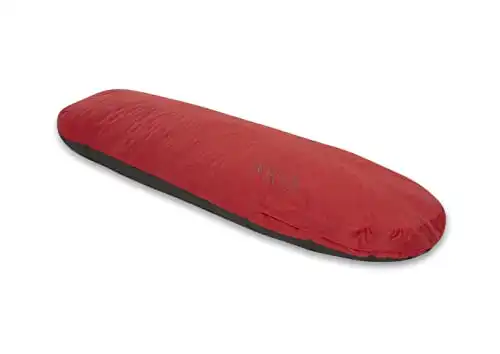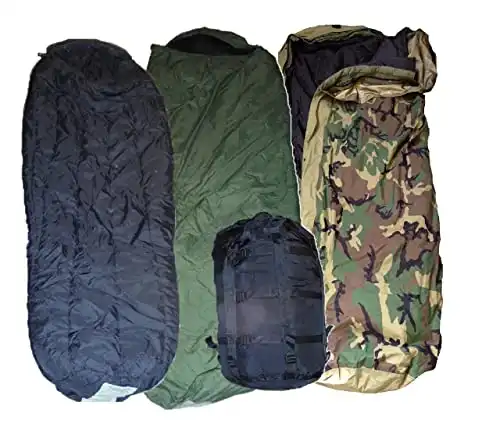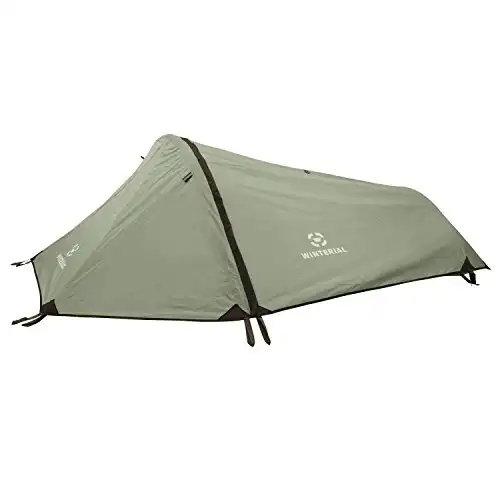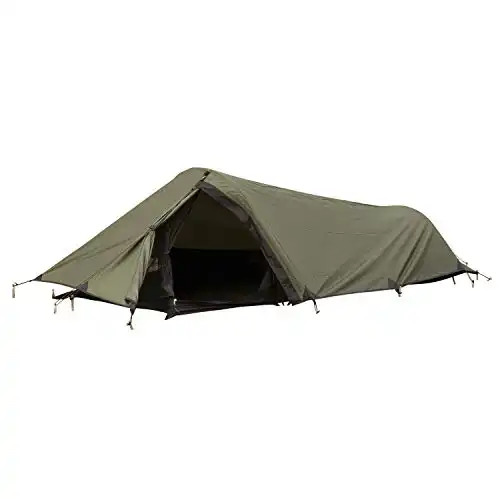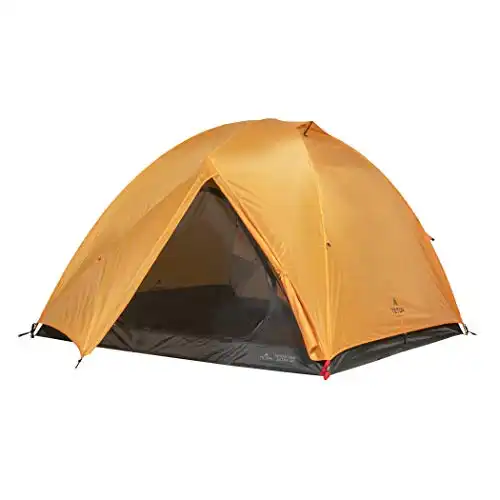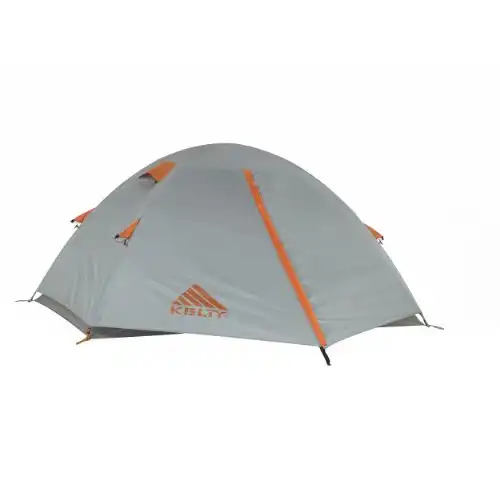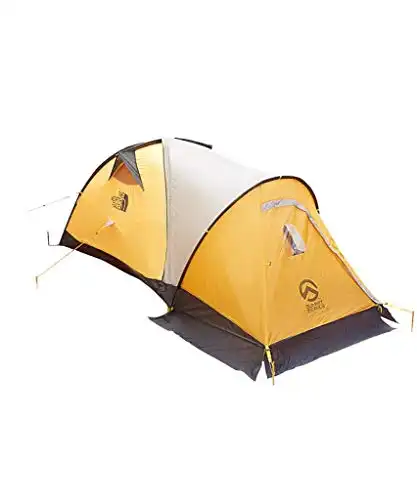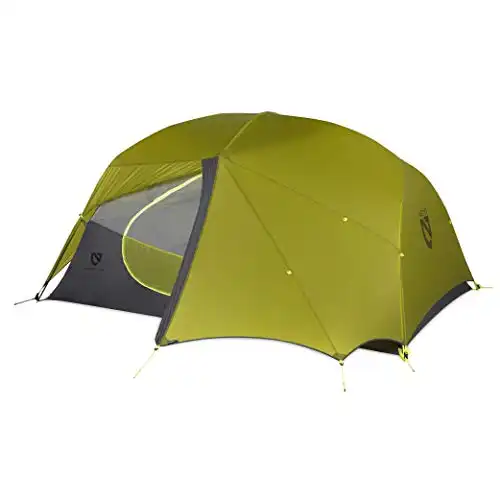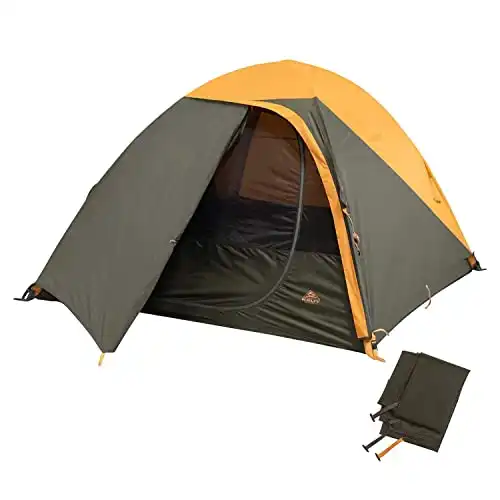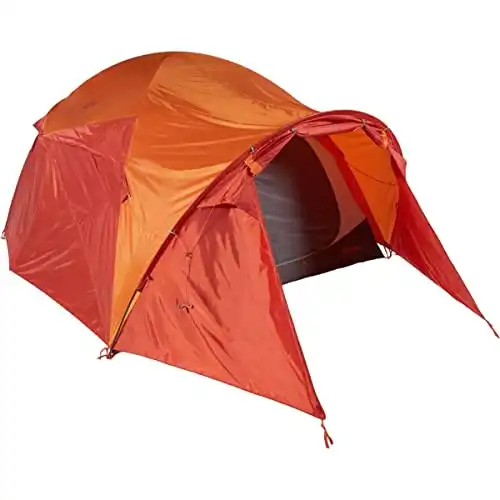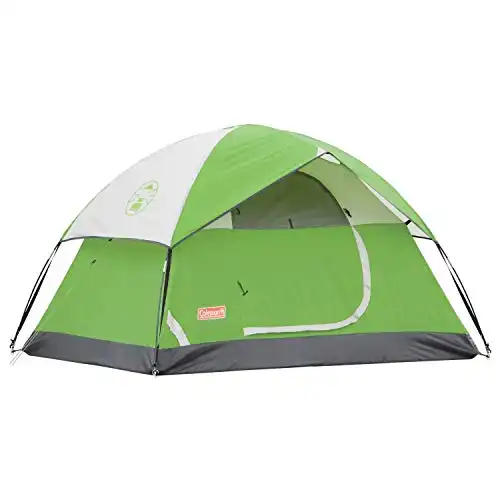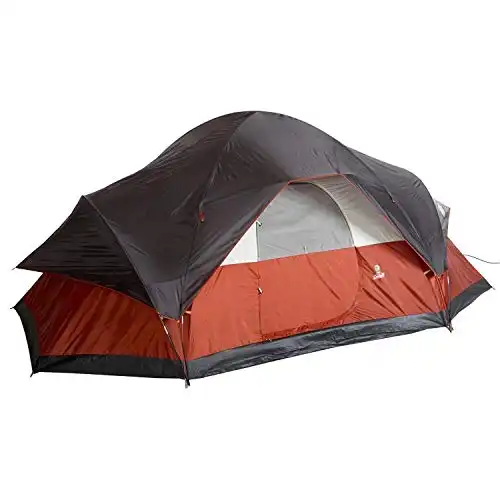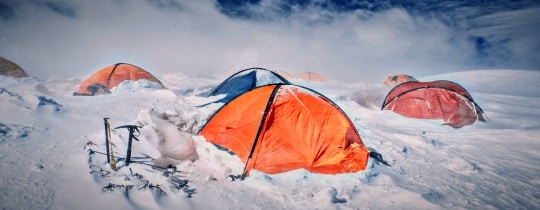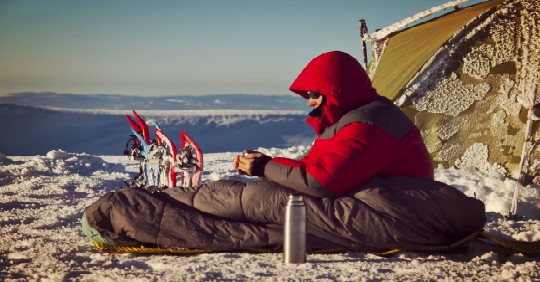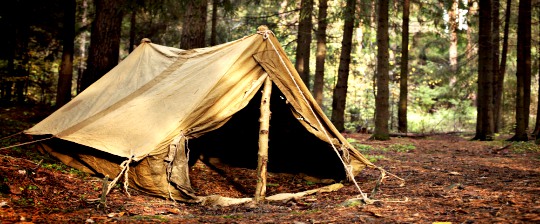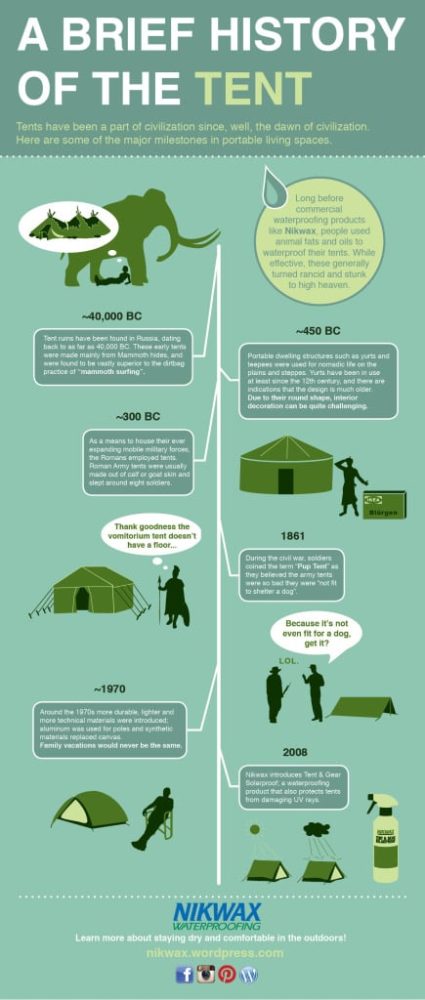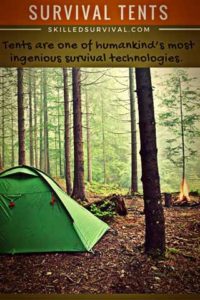
A Guide On Finding (& Using) A Survival Tent In Extreme Weather
Because sheltering is a fundamental survival skill.
And having a roof over your head keeps you:
- Dry
- Warm
- Safe
- Private
All things a good survival tent gives you in the wilderness!
TOPICS IN THIS GUIDE… ↓(click to jump)
- Best Survival Tents On The Market
- Best Survival Tent Features
- Other Tent Considerations
- How To Maintain Your Tent
- A Brief History of Tents
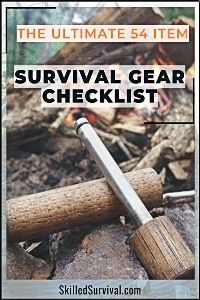
Want a free 54 item survival gear checklist?
Click here to instantly download this Complete Checklist PDF. No purchase necessary.Best Survival Tents On The Market Today
Securing shelter is NOT a simple task in the wild…
- Sure, you might find an uninhabited cave
- Or find a random debris shelter
- Or you stumble into a vacant cabin
And while there are all valid options, they RELY ON LUCK.
And luck in survival is ALWAYS a terrible plan.
Instead you should invest in a high quality survival tent.
Now there are three categories of survival tents:
- Super Lightweight Mylar Bivy Tents
- Lightweight Nylon Tents (with poles)
- Strong Geodome Tents
Each has it’s pros and cons and work well depending on your specific situation.
1. Super Lightweight Mylar Bivy Tents
RAB is a British company that makes great mountaineering gear.
They’re finally becoming more well-known in the US.
But you can still find their high-quality gear reasonably priced as they try to earn a following here.
The Storm Spartan provides what the name implies - a minimalist shelter from the elements.
There are no poles or fancy options, just a simple, breathable fabric cover with a mesh vent panel.
They claim a wider sleeping bag profile than other manufacturers. This should give you more space to move around in your sleep.
If you’re looking for a durable option with fewer elements to break down, this bivy sack is hard to beat!
↓ FREEZING Solo Winter Camping
Tennier has supplied integrated sleeping bags and emergency sacks to the US military for years.
These modular sleep systems combine a waterproof Gore-Tex outer bivy sack with two different weights of liner bags.
The specs claim it can provide insulation down to -40deg.
It’s not lightweight, but you know this gear has been tested.
I’m not sure I’d want to test sleeping in -40deg. But you know some poor recruit had to do it after carrying an 80lb pack and his rifle for 12 miles.
This one is MY top pick.
IT's an incredible piece of survival gear.
Small enough to fit in your hand, this survival blanket utilizes Mylar.
Mylar provides the highest quality, most effective emergency blanket around.
And because it's taped together, it traps your body heat inside more like a sleeping bag than a blanket.
The Tact Bivvy is the best bang for your buck when you compare weight to warmth.
It provides maximum heat with minimal weight.
Making it perfect for bug-out bags, get-home bags, survival packs, or glove boxes.
Not only that, but it is windproof, waterproof, easy to use, and includes a small stuff sack.
This helps keep it stored neatly when you are not using it.
And the best part? It's affordable. At this price, it's an accessible survival tool for everyone.
Field Tested
We even tested the Tact Bivvy on a chilly 40-degree overcast day. "Just In Case," Jack (our managing editor) recorded temperatures inside the Tact Bivvy, and after only 10 minutes, it was a warm 82 degrees.
It was so warm inside the Tact Bivvy that he got out shortly after 10 minutes to keep from overheating.
If it works this well on a cool 40-degree day, it's a legitimate lifesaver in below-zero survival situations.
The bottom line is - The Tact Bivvy works and is excellent for cold-weather survival.
I recommend you get one for your bug-out bag, one for your medical first aid kit, one for your car, and your home.
↓ TACT Bivvy Review
2. Lightweight 1 or 2 Person Backpacking Tents
If you can’t handle the thought of sleeping under the stars in a bivy, then this is your next best bet.
They take up more space and you add a few lbs. but you’ll have a “safe space” when it’s time to sleep.
This personal-sized small tent is both lightweight and very affordable.
It's good for three seasons and uses an easy “two hoop” system for a quick setup.
How quick? 5 minutes or less...
And packed, this tent only weighs 2 lb 9 oz!
↓ Winterial Bivy Tent Review
Another personal tent, this lightweight tent is perfect for your bug out bag.
It is durable, and even if you manage to damage it, it comes with a small repair kit to fix the tent on the go.
↓ 4+ Year Follow-up Review – Snugpak Ionosphere
Another single-person tent, this innovative design uses only one lightweight pole.
The first wall is a light, protective mesh that allows users to sleep under a full view of the stars.
But it also includes a durable and waterproof rain fly for wet or cold weather.
↓ Teton Sports Mountain Ultra 1-Person Tent
This double-wall tent packs up to 6 lbs 14 oz, which is still easily packable for a backpacking trip or survival excursion.
The rainfly is waterproof and can be removed - under the wall is a mesh insect net.
One of the unique features of this tent is its “stargazing window” on the rainfly. It allows you to watch the stars and sky above your tent without removing the rain fly.
No, not a survival feature, but still awesome.
↓ Kelty Outfitter Pro 3 Backpacking Tent
This North Face Summit tent is the one I use, and it has served me well for almost five years.
It uses two lightweight crossing poles and sets up incredibly fast. It's a two-person, single-wall tent, which is waterproof and warm.
It comes with an attachable vestibule and breaks down into only 3.25 lbs.
The Assault series was designed for high-altitude, high-intensity expeditions.
And it's still a very durable and extremely versatile tent.
Also, North Face offers a lifetime warranty on its equipment.
So, if there’s ever a problem with your Assault Series tent, you can get it repaired or replaced without any worries.
↓ North Face Assult 2 Setup
3. Larger 3+ Person Tents
Yes, these tents weight more but you can fit more people in them.
3 people, 4, 6 or even 8.
So if you need a survival tent for a family, there are your best options…
This 3-person tent combines lightweight minimalist with function and durability.
The tent bag comes with Velcro pockets and compression straps.
So no more fighting with the poles and rain fly when it's time to get back on the go.
↓ NEMO Dragonfly Tent – The Sweet Spot
This four-person tent uses a snap-on pole design that makes the setup fast. When packed away, it's 7.5 lbs.
The tent suits rainy conditions and high winds but functions just as well in warm weather.
↓ Kelty Grand Mesa 4 3-Seasons Backpacking Tent
A spacious tent, it will comfortably fit six people. Unfortunately, any tent this size starts to get pretty heavy.
However, due to its size and weight, I wouldn’t recommend this tent for your bug-out bag.
↓ Marmot Halo 6P 3-Season Camping Tent
For decades, Coleman has been a trusted brand name in survival and camping gear. Their equipment is durable and reliable, and their Sundome tent series is no exception.
The 10 ft. X 10 ft. floor sleeps six people. It's incredibly easy to set up - requiring only two lightweight poles. And for its size, it's affordable vs. tents of similar size.
↓ Coleman Sundome 6-Person Tent Review
The largest tent on our list, this eight-person survival tent, is 17 ft. X 10 ft. and is tall enough to stand up inside. The Coleman weather-tec system is guaranteed to keep people inside dry and safe from wet weather.
An airflow port allows fresh air to move through the tent without sacrificing insulation. There are even room dividers inside the tent. These enable users to create several rooms for maximum privacy.
↓ Coleman Red Canyon 8 Tent

Want a free 54 item survival gear checklist?
Click here to instantly download this Complete Checklist PDF. No purchase necessary.Canvas Cold Weather Tents
So far, we’ve focused only on nylon and polyester tents.
However, you might want to look into another fantastic tent option:
A high-quality, durable, and warm canvas tent.
Check out our post called: Canvas Tents – How To Find The Best One For You.
Best Survival Tent Features
Here are the essential features you want for any tent (especially for survival):
↓ Everything You Need to Know About Tents
Durability
Modern fabrics are engineered to be highly durable.
But some tents are more “bomb proof” than others.
The more durable in extreme environments – the better.
Weight
Heavy tents are a pain in the back.
If you’re carrying one in your pack, every ounce matters.
Regarding survival, a lighter-weight, portable tent is your best bet.
Even for larger family-sized tents, if all things other things are equal, I’d take the lighter one every time.
Ease Of Setup
There are tents out there that seem to take an engineering degree to erect.
These elaborate tents are time-consuming and frustrating to set up.
Instead, try to find a tent that’s easy and intuitive.
Setting your tent up quickly and without headaches is a significant survival advantage.
Shape and Color
The shape isn’t all that important unless you’ll be in high-wind terrain – locations like the side of a mountain.
In these situations, a low-profile aerodynamic tent is best.
But for survival, color is the more strategic choice.
It depends on whether you’re trying to stay hidden or more interested in rescue.
Wilderness survival vs. SHTF survival…
For SHTF survival, you’ll want a natural-colored tent to blend in with your surroundings.
For a situation where rescue is desirable (like high-altitude mountain climbing), you want bright orange for high visibility.
Vestibules
A tent with a vestibule is like having a mudroom for your tent.
Vestibules allow you to keep your muddy boots and gear outside the tent and protect it from rain and snow.
Vestibules are a handy tent feature.
Rain Protection
If a tent doesn’t come with a rain fly, it should be made of a single waterproof wall.
Nothing sucks worse than waking up trapped inside a wet bag.
So make sure you investigate the waterproof properties of any tent you buy.
The Number Of Occupants
If you have a family, you’ll have to go big. Big enough so everyone can fit inside.
I prefer a two-person tent because it’s spacious for one, yet I can fit a friend if need be.
Some people like single-person tents, but I find them a little claustrophobic.
This decision is all about personal needs and preferences.
Price
Some tents are insanely expensive, while others are cheap.
Fit the tent you buy to your budget but remember – you usually get what you pay for when it comes to gear like this.
If you go super cheap, expect cheap results.

Want a free 54 item survival gear checklist?
Click here to instantly download this Complete Checklist PDF. No purchase necessary.Types of Emergency Tents
There’s a tent out there for every possible survival situation.
Listing all the brands and models in a single article would be impossible.
So, here’s a list of the more popular types of tents available:
4 Season Tents
These tents are good for year-round use.
They have the waterproofing necessary to get you through a wet spring.
Insulation to get you through fall and even winter.
And a removable rain fly can help with cooling capabilities in the hot summer.
Cold Weather Tents
These tents are engineered from the ground up to pack in heat like an oven and keep the cold at bay.
Some of them even come with little stoves or heaters you can set up inside.
Cold-weather tents are no joke.
Cold weather tents can be expensive since they are so high-tech.
Backpacking Tents
Designed to be ultra-lightweight and super-compact.
These tents are my personal favorite for survival.
They can fit inside a bug-out bag.
They’re designed to be carried long distances.
They take up minimal space.
You can set them up quickly, and they break down with ease.
Backpacking tents are ideal for survival on the move.
Dome Tents
These are designed specifically to give you lots of ROOM.
Most professional expedition tents are dome tents.
That way, they can fit as many people and as much gear as possible.
Because they don’t use any flat walls, they also work well at high altitudes and high wind survival situations.
Tactical Bivvy
Bivies are the ultimate in camping minimalism.
Bivies are little more than a body sack to keep mild elements at bay.
They look like tent coffins but are highly packable and life-saving in a pinch.
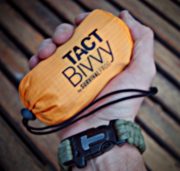
This Bivy comes in an easy-to-carry pouch and weighs less than 5 oz.
This Tact Bivvy is also made with NASA technology material called Mylar.
This material traps your body heat to keep you warm even in freezing temperatures.
The perfect survival tent for cold weather emergencies.
I think everyone should add one to their glove box – it can save your life.
However, a bivy is not a survival shelter for the long-term haul but perfect for surprise emergencies.
↓ Bug Out Shelter – TACT Bivvy Review
Tube Tent
A tube tent is more elaborate than emergency blankets and or bivy bags but they’re made in a triangle tube shape.
This makes them closer to a tent-shaped shelter.
Some are made of more durable materials than others.
But they’re super lightweight, very compact, and do a good job of retaining heat.
↓ Can This Tube Tent Be Used As Survival Gear?
Teepees
Made famous by the Plains Indians, teepees have been a popular tent style for a long time.
Even today, modern material tents are designed in the shape and form of a teepee.
One single vertical pole holds up the walls, which are staked to the ground around it.
Yurts
Nomadic tribesmen in Central Asia invented yurts.
Today, they are popular in mountainous regions around the world.
They are anything but portable, though.
Most modern yurts sit on a concrete foundation and need a full work crew to build it.
But once a yurt is up, it’s the ultimate in permanent tent life.
They are spacious and stay warm when it’s cold out and cool when it’s hot.
Ideal for long-term survival.
How Best To Maintain Your Tent
The better you care for your tent, the longer it will last.
And since most tents aren’t cheap, it’s in your best financial interest to make your survival tent last as long as possible.
Cleaning
Use a non-abrasive sponge, cold water, and non-detergent soap and wipe doesn’t the interior and exterior of the tent gently.
Scrub off any caked dirt, and make sure to wash away any mold or mildew you might find.
Clean the zippers and seams the same way as well.
Never machine wash your tent!
That’s the fastest way to ruin it for good – the modern lightweight materials are great for wind and rain but can’t stand up to machine wash abuse.
Once you’ve wiped down your tent, allow it to air-dry the outside in direct sunlight if possible.
The UV rays help to kill any remaining germs leftover from your most recent adventure or survival endeavor.
Care For Your Tent
When you get a new tent, it is imperative to read the instructions.
No matter how many times you’ve set up a tent, every single one is different.
Don’t risk ruining it before you ever get to use it.
Be gentle with the zippers and poles.
While they are designed to be durable and endure some abuse, they are not unbreakable.
Fixing a busted zipper or broken tent pole is easy – if you’re in town.
But if you’re out in the wilderness surviving, replacing those is not so easy.
So take care of them, and be as gentle with them as possible.
Never store a tent wet.
Often when you get back from the wilderness, your tent might be damp – either from rain, snow, dew, or perspiration.
Whatever the cause, you need to make sure you let the tent air-dry for a while before you roll it up and pack it away.
If moisture gets locked in with the tent, mold, and mildew will begin to grow.
When you’re storing your tent, roll it neatly and tightly, don’t throw it away in a sleeping bag.
This advice is important because it keeps the material from crumpling and creasing all over.
Creases can create weak points in the nylon’s waterproofing, weakening its durability.
When you roll it up neatly, you minimize the number of wrinkles in the tent’s fabric.
Use a footprint or tarp underneath.
It will increase the life of your tent by years if you use a protective layer underneath it.
Most tents have an individually sized footprint that you can buy separately.
But there are also standard footprints that will fit most tents.
And if you want to go old-school, purchase a tarp, and fold it to the size/dimensions of your tent.
Avoid leaving your tent in direct sunlight for extended periods.
Sometimes you can’t prevent this.
But if you can, it’s good to try and keep your tent shaded for most of the time it’s erect.
Direct sunlight has its benefits when you’re air-drying your tent.
But long exposures can mess with the chemistry of the waterproofing.
Leave the shoes outside!
It’s not just common courtesy but prevents your boots from tearing holes in the floor.
Also, it keeps excess dirt and debris out, which is a benefit in itself.
Shake your tent out before rolling it up.
Getting all the dirt, leaves, twigs, and insects out of the tent before rolling it up is essential.
It keeps the tent clean and reduces the frequency with which you need to clean it.

Want a free 54 item survival gear checklist?
Click here to instantly download this Complete Checklist PDF. No purchase necessary.A Brief History of Tents
Tents are one of humankind’s most ingenious survival technologies.
Tents have been around for a very long time.
Humans understood how to make portable shelters before we learned how to cultivate agriculture.
And we’ve had a lot of time to perfect tent technologies.
Today tents are a thousand times more sophisticated, elaborate, and specific.
The oldest evidence of people using tents was from about 40,000 BC.
Humans were, at that point, roaming and hunting mammoths!
Which was what they used to make their tents.
Mammoth hide tents weren’t exactly lightweight.
They were good at insulating our ancestors from the harsh weather of the tundras.
Animal hides had another benefit besides being warm.
People harvested the oils and fats from the animals as waterproofing.
They didn’t have Gortex-like materials back then, so they had to get crafty.
By infusing their tents with natural oils, they created a water-repellent surface.
Around 450 BC, Yurts and teepees were the highest-tech tents on the planet.
They functioned as portable caves for nomadic peoples.
By 300 BC, the Romans had adopted tent technology out of pure necessity.
Their massive armies moved so frequently that tents became an important Roman technology.
The Romans used goat or calf skins for their army tents, which usually slept around eight soldiers apiece.
Fast forward to World War II
The next biggest innovation in tent history was underway.
Eberhard Koebel designed a tent like the Scandinavian Lavvu tents (which were like European tee-pees).
This tent was banned in Germany during the war but quickly became popular in German scouting after.
Then, in 1951, Eureka’s self-standing draw-tight tent changed the game forever!
This tent was the first built using an aluminum frame and synthetic materials for the walls.
Since then, tents have been getting lighter weight and more advanced every year.
Tents have come a long way since the days of mammoth hide, but the idea is still the same: portable, weatherproof covering.
Final Thoughts
Tents are one of the most important survival inventions in human history.
They changed the way we hunt, the way we interact with the outdoors, and the way we survive in the wild.
The idea is straightforward and elegant, and our tents have become engineering marvels with modern technology.
But finding the right survival tent is no simple endeavor.
Honestly, the best way to meet all your survival needs would be to buy several tents:
- A tent for bugging out
- One for camping
- A one for backpacking
- One for the whole family
But for most of us, that’s financially unrealistic.
This means you must figure out which tent can meet as many of your survival needs as possible.
Whatever tent you choose, having a survival tent isn’t a matter of comfort – it’s a question of survival necessity.
Make sure that you have a durable tent on your survival gear list!
Why Trust Skilled Survival...
Go here now to review a full breakdown of:
- Who We Are
- Our Credentials
- Our Mission
- & Product Recommendations...
Here are a few highlights of our teams credentials & certifications:
- Certified Member of a Mountain Search & Rescue Organization
- Plant Emergency & Safety Leader for a Major Food Manufacturer
- Member of the 10TH Mountain Division Hut Association
- Certifications: Avalanche 1, WFR, CPR
- Official Gear Tester for Numerous Outdoor Gear Companies
- Countless Multiday Backpacking trips into Remote Wilderness
- Bachelor's Degree In Mechanical Engineering
- Bachelor's Degree In Civil Engineering
- Bachelor's Degree In Biomedical Engineering
"It takes 20 years to build a reputation and five minutes to ruin it." - Warren Buffett
We're fully aware that trust is NOT something you GET but is EARNED.
And we'll continue to earn YOUR trust through our forthright and honest approach with each new Blog Post, Guide & Product we create...
Will Brendza

P.s. Do You Live In A 'Danger Zone' County?
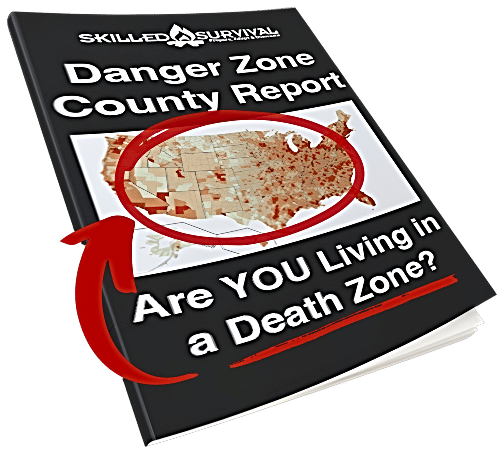
Find out now using my Danger Zone County List & Special Report it’s absolutely FREE.
In minutes you’ll know EXACTLY where you stand and if you should be worried or not..
So click here to get my FREE Danger Zone County List & Report…

Recommended Reading
LifeStraw Review: An Expert Puts It To The Ultimate Test
LifeStraw Review - with no moving parts, chemical additions, or batteries, it provides a lightweight, compact filter to treat up to 4000L...
Best Survival Bow: 16 Surprising Reasons YOU Should Get One
A survival bow is one of the most underappreciated weapons I think EVERYONE should own. Here are 16 reasons why YOU should get one today.
Best Survival Hatchets: Tough Enough To Outlast The Wild
Not all hatchets are created equal. A quality survival hatchet can do tasks even a survival knife cannot. Here's the one I carry in my pack.
Best Survival Radios: Why You Must Secure One (before SHTF)
Be the ONE who knows what the hell is going on after SHTF. Here's how to set yourself up with a reliable survival radio in a future disaster.
Best EDC Flashlights: Small, Compact But Still Super Bright
The best edc flashlights are durable, bright, compact and worth carrying! In this guide, we review the best one to make your search easy.
11 Proven DIY Survival Gear Projects ANYONE Can Follow
Building DIY survival gear doesn't NEED to be complicated to be effective. Here are the 11 best projects you can finish in just a few hours.
